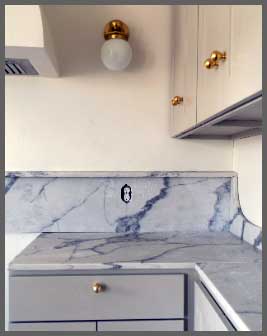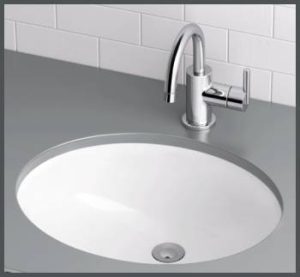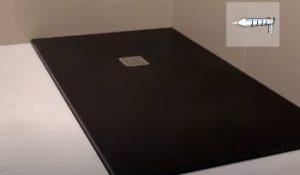With so many possibilities available, it’s simple to get disoriented while deciding on the ideal backsplash for your kitchen. Among these, two contenders have emerged as popular favorites: quartz and subway tile.
To assist you in making an educated choice, In this article, we will examine kitchen backsplashes in-depth, compare the benefits of quartz and subway tile, and respond to some commonly asked concerns.
Quartz And Subway Tile: Exploring the Key Differences
When it comes to selecting the perfect backsplash for your kitchen, two materials consistently stand out as popular choices: quartz and subway tile. While both options are undeniably attractive, they have distinct characteristics that set them apart.
Let’s explore the key differences between quartz and subway tile to help you make an informed decision for your kitchen upgrade.
- Material Composition and Manufacturing Process

Quartz is an engineered stone created by combining ground quartz crystals with resins, pigments, and polymers.
This mixture is then poured into a mold, compressed under high pressure, and cured at high temperatures to create a solid surface.
The end product is a substance that is very durable, non-porous, and heat-, scratch-, and stain-resistant.
Conversely, subway tiles are often constructed of porcelain or ceramic clay.
These rectangular tiles are formed, dried, and then fired at high temperatures in a kiln. The tiles are often glossy to create a smooth surface that’s easy to clean and maintain.
Subway tiles have been a popular choice for kitchen backsplashes for over a century, thanks to their timeless design and versatility.
- Aesthetics and Design Flexibility
Due to the large variety of colors, patterns, and finishes that quartz is offered in, there are several design options. Manufacturers can manipulate the pigments and patterns to mimic the appearance of natural stones like granite or marble or create bold, unique designs.
This design versatility makes quartz an excellent option for homeowners seeking a personalized touch in their kitchen.
Subway tiles, with their classic rectangular shape, lend themselves to various patterns and layouts, such as herringbone, running bond, or stacked. Due to its wide range of colours and finishes, homeowners may create a unique style that reflects their own design choices.
While not as diverse as quartz, subway tiles offer a timeless and adaptable aesthetic that complements a wide range of kitchen styles.
- Durability and Maintenance
As a result of its resistance to heat, stains, and scratches, quartz is renowned for its durability. It doesn’t need to be sealed because its surface is non-porous and not open. It’s also easy to clean—just wipe it down.
This low-maintenance material is ideal for busy households or anyone looking for a hassle-free backsplash option.
Subway tiles are relatively durable, but they’re not as resistant to scratches or heat as quartz. Additionally, the grout lines between the tiles can become stained or discolored over time, requiring regular cleaning and occasional resealing.
While subway tiles are generally easy to maintain, grout maintenance can be a downside for some homeowners.
- Cost and Installation
Quartz backsplashes tend to be more expensive than subway tiles, with prices ranging from $50 to $100 per square foot, including installation.
The cost is due to the material’s manufacturing process and the need for professional installation, as quartz is heavy and requires specialized tools and expertise. Here is an installation video for you.
Subway tiles are a more budget-friendly option, with prices typically ranging from USD 15 to USD 30 per square foot, including installation. The tiles are relatively easy to install, and many DIY enthusiasts can tackle this project without professional help, further reducing costs.
Quartz: A Modern Marvel
Quartz backsplashes have gained popularity in recent years due to their versatility, durability, and aesthetics. Quartz is an engineered stone made by combining ground quartz crystals with resins, pigments, and polymers.
This way of making things makes a material that is not only beautiful but also very strong and immune to heat, scratches, and spots.
Pros of Quartz Backsplash
- Durability: Quartz is one of the most durable materials available for a kitchen backsplash. It can’t be scratched, stained, or damaged by heat, so it’s great for high-traffic places.
- Low maintenance: Quartz is a non-porous material, which means it doesn’t require sealing and is easy to clean.
- Design versatility: With a vast array of colors and patterns, quartz can be customized to fit any design aesthetic, whether you prefer a traditional or contemporary look.
Cons of Quartz Backsplash
- Cost: Quartz backsplashes tend to be more expensive than other materials, such as subway tiles.
- Professional installation: Due to the weight and unique properties of quartz, professional installation is typically required.
Subway Tile: A Timeless Classic

Subway tile, named after its debut in the early 1900s New York City subway system, has been a popular choice for kitchen backsplashes for over a century.
Rectangular tiles are usually ceramic or porcelain and vary in color, design, and finish.
Their classic, timeless design has made them a favorite among homeowners and designers alike.
Pros of Subway Tile Backsplash
- Affordability: Subway tiles are generally less expensive than quartz backsplashes, making them an attractive option for budget-conscious homeowners.
- Ease of installation: Subway tiles are relatively easy to install, and many DIY enthusiasts can tackle this project without professional help.
- Design flexibility: With numerous colors, finishes, and sizes available, subway tiles can complement any kitchen style, from modern to traditional.
Cons of Subway Tile Backsplash
- Grout maintenance: The grout lines between subway tiles can become stained or discolored over time, requiring regular cleaning and possible resealing.
- Less durability: Subway tiles can chip or crack more easily than quartz, particularly in high-traffic areas.
Also Read: The Tale of Bianco Superiore Quartzite.
Frequently Asked Questions (FAQ)
Generally, tile backsplash, including subway tile, is more affordable than quartz. The price difference can be attributed to the material and production costs, as well as the installation process.
Quartz makes for an excellent backsplash material due to its durability, low maintenance, and design versatility. However, it’s essential to consider the cost and the need for professional installation when making your decision.
The expenditure of a quartz backsplash can vary depending on several factors such as the specific type of quartz, the area size, and the complexity of the installation procedure. On average, quartz backsplash costs can range from $50 to $100 per square foot, including installation. In contrast, subway tile backsplash costs typically range from $15 to $30 per square foot, including installation. Keep in mind that these prices can change based on your location and what specific materials you decided to take.
Both ceramic (subway tile) and quartz backsplashes have their advantages and disadvantages. Ceramic is usually cheaper and easier to install, while quartz is more lasting, requires less upkeep, and can be used in more ways when designing. The choice ultimately depends on your budget, design you choose, and how much upkeep you want to do.
Solid slab backsplashes, such as those made from quartz, are typically more expensive than tile options like subway tile. The higher cost is due to the material itself, as well as the need for professional installation. However, solid slab backsplashes often offer greater durability and lower maintenance requirements than tile backsplashes.
The Final Verdict
No matter what material you opt for, your kitchen backsplash should not only be practical but a representation of your individual style. To help you decide between quartz and subway tile, it’s important to assess both options in terms of budget, durability, maintenance needs and design appeal.
If low-maintenance materials are high on the priority list for you or if a customized look is desired then quartz could be the best choice. On the other hand, if affordability is at top of the mind along with ease of installation as well as classic designs then consider selecting subway tiles instead.
Whatever option appeals more to you – make sure that by carefully examining all aspects including consulting experts or knowledgeable friends before making any decisions – so that an eye-catching kitchen backsplash can be created which stands up against time’s passage successfully!



